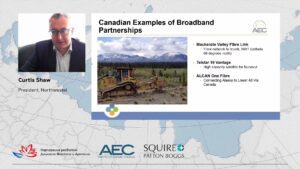Public-Private Partnerships and Infrastructure Development in the Arctic
On 25th of August the Arctic Economic Council (AEC) hosted a hybrid roundtable discussion on public-private partnership (PPP) in the Arctic. Infrastructure development such as roads, air- and seaports, broadband connectivity and logistics is crucial for sustainable economic development of the Arctic.
“There are 4 million people living in the Arctic, a significant part the population is indigenous people. In order to bring infrastructure to small and remote communities, private sector and government should join their efforts,” said Evgeny Ambrosov, the Chair of the AEC and deputy Chairman of the Management Board and Director of Maritime Operations, Shipping and Logistic of NOVATEK.
Nicolai Korchunov, the Russian Foreign Ministry’s Ambassador at Large, and Chair of Senior Arctic Officials, emphasized that infrastructure development and digital connectivity reduces transportation costs and shortens delivery time, thus, integrating Arctic economy into the global market. Arctic Council strongly supports responsible, low-emission and sustainable investment in, and development of, resilient infrastructure.
Guggenheim partners, a global investment firm, has estimated that “infrastructure requirements in the Arctic region alone are expected to reach nearly $1 trillion over the next 15 years.” Yet, infrastructure projects are challenged by several socio-economic factors. Scarce population and vast distances between the Arctic communities make it difficult to generate commercial interest because of the economy of scale. Infrastructure development requires specific skills from local authorities to evaluate the projects. Moreover, sometimes there is a scepticism from the local population towards private sector investing in public infrastructure.
“PPP can be a good solution to finance infrastructure development, as it addresses a lot of challenges. AEC has developed the Arctic Investment Protocol as a guide for investors to follow. Presently we are collecting data on the best investment opportunities that lives up to the protocol, ” said Mads Qvist Frederiksen, the director of the Arctic Economic Council.
The roundtable on PPPs showcased success stories of infrastructure projects deployed in different Arctic states.
Lori Davey, Chair of the AEC Responsible Resource Development Working Group (RRDWG) presented Alaska United-Aleutians Fiber Project. Unalaska/Dutch Harbour is one of the largest seafood processing areas and the largest fishing port in the United States. Due to remoteness of the Aleutean islands, the community does not have access to a fibre-based network. Currently the area is serviced by satellite internet services.
GCI, a telecommunications company from Alaska, received a grant from US Department of Agriculture (USDA) to route a terrestrial broadband cable to Unalaska/Dutch Harbor connecting with several remote communities – King Cove, Sand Point, Akutan, Chignik Bay and Larsen Bay. GCI will also deploy an approximately 1280 kilometre subsea fibre-optic system to Kodiak island.

“We managed to argue that fish processing facilities fall under the agricultural activities and were awarded with a USD25 million federal grant from USDA. This is a great project that is going to bring an immense connectivity to that very, very remote region,” said Lori Davey, Vice President of Enterprise Markets at GCI.
Earlier in August the US Senate has approved the 1 trillion USD infrastructure bill, after the House passes it Alaska will receive 550 billion USD in new spending over five years for transportation, including electric and low-emitting transport as well as renewable energy projects and broadband.
Cutis Shaw, president of Canadian telecommunication company Northwestel, introduced Arctic Connectivity Sustainability Matrix developed by the AEC Connectivity working group (CWG). The matrix provides an overview of different funding models to accelerate broadband development projects. He also presented Mackenzie Valley Fibre Link, a 1,154-kilometre broadband cable connecting Fort Simpson in Northwest Territories with Inuvik and hitting in 6 communities on the way. Despite the fact that there is no economic case for the private company to develop infrastructure in that area, providing access to the highspeed internet is crucial for education, telemedicine services, emergency preparedness and business development to serve local populations. The project was financed through a bank debt, and now regional government holds the ownership of the asset, while Nortwestel is contracted to operate the project for 20 years.

“What is more, the fibre optic cable will serve a number of space agencies facilities are located near Inuvik, tracking satellites when they are on the other side of the world from Europe and Russia”, said Curtis Shaw.
Public-Private Partnerships is one financing model that can be used in the Arctic to develop the necessary infrastructure. Arctic Economic Council works on promoting investment opportunities and unite public and private partners in potential projects.
This press release originally appeared on the website of the Arctic Economic Council.
